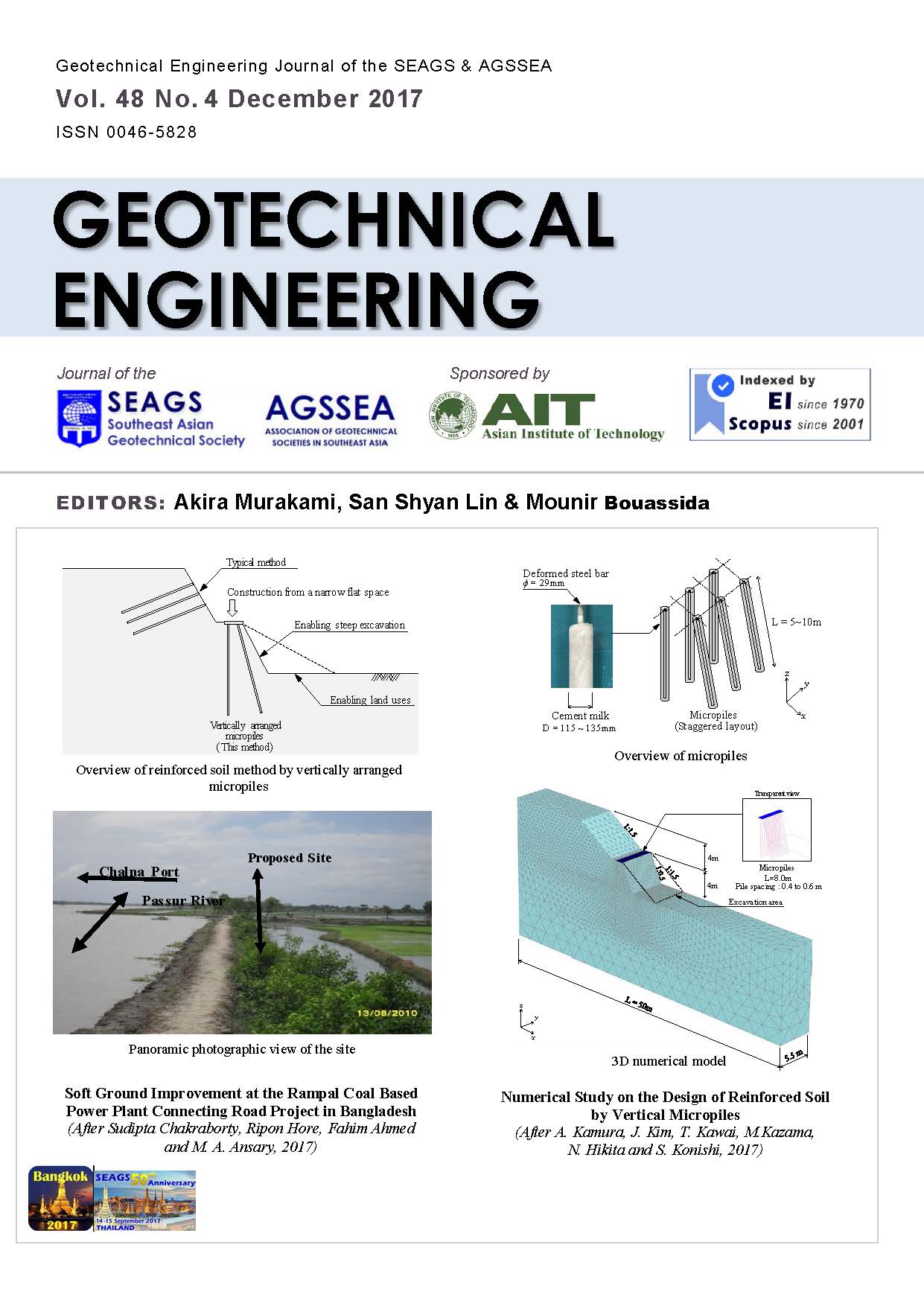Stabilization of Seepage Induced Soil Mass Movements using Sand Drains
Main Article Content
Abstract
Rising groundwater levels increases the pore water pressure in the soil slopes, acting as a triggering factor for landslides. By installing sand drains (horizontal or vertical) along the slope, the groundwater level can be lowered below the critical level, reducing the pore water pressure and also the probability of slope failure significantly. In this study, laboratory-scale soil slopes of varying geometry were modelled in a tank and constant inflow was provided to simulate groundwater flow. With and without loading, the critical phreatic levels for the various slopes were determined. Vertical sand drains were then installed along the slope and the tests were repeated for a fixed duration. It was found that the slopes did not fail and remained stable for a longer time period, even with increase of groundwater flow. Hence it was concluded that sand drains are a feasible slope stabilization technique even on slopes subjected to static loading.
Article Details

This work is licensed under a Creative Commons Attribution-NonCommercial-NoDerivatives 4.0 International License.
Copyright © 2019 Association of Geotechnical Societies in Southeast Asia (AGSSEA) - Southeast Asian Geotechnical Society (SEAGS).

